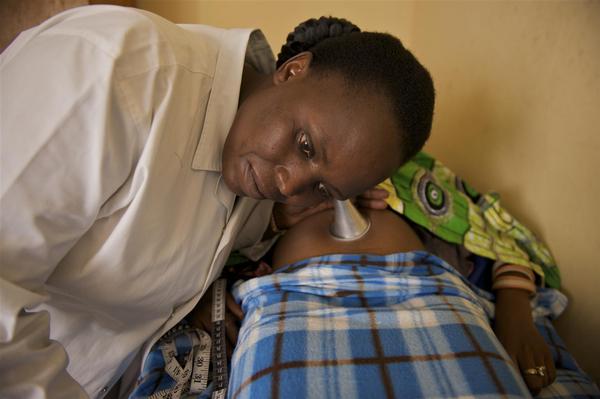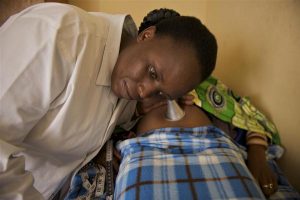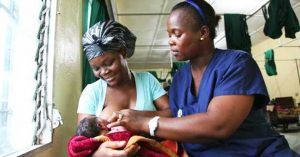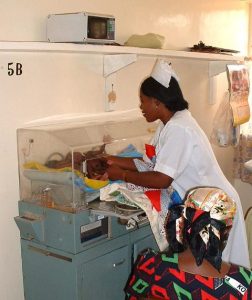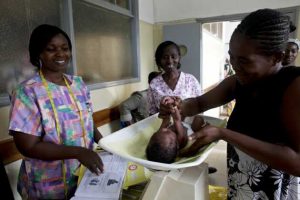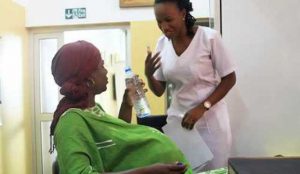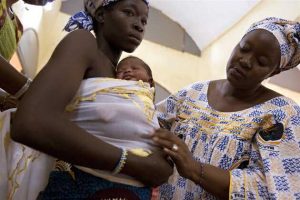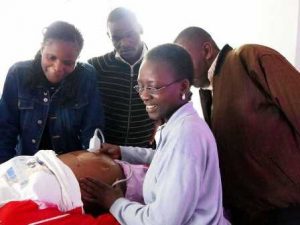10 Ways to improve quality of care in health facilities, by WHO
There is increasing global awareness that good quality care is key to keeping mothers and babies alive and well. Today, each year there are 303 000 deaths of women during pregnancy and childbirth, 2.6 million stillbirths, and 2.7 million deaths of babies during the first 28 days of life. Better care can prevent many of these deaths.
More babies are being born in health facilities. A new UN- and partner-supported “Network for Improving Quality of Care for Maternal, Newborn and Child Health” aims to help countries improve the quality of care in those facilities and to respect the rights and dignity of those who seek care.
This photo story describes some of WHO’s recommendations on how countries can improve quality of care in their health facilities and prevent maternal and newborn deaths, based on its Standards for improving quality of maternal and newborn care in health facilities.
Pregnant women should receive the right care, at the right times
WHO recommends a woman see her health provider at least 8 times during her pregnancy to detect and manage potential problems and reduce the likelihood of a stillbirth or neonatal death. Antenatal care also offers an opportunity for health workers to provide a range of support and information to pregnant women, including on healthy lifestyles, preventing diseases, and family planning.
Newborns should receive essential care immediately after birth
Newborns should be kept in skin-to-skin contact on their mother’s chest and enabled to breastfeed. They need to be kept clean and warm, and given care for their eyes and umbilical cord. Bathing should be delayed for 24 hours, vitamin K and vaccines given as per national guidelines, temperature monitored, and complications identified and managed. A complete assessment before discharge, normally around 24 hours, serves as a first postnatal check-up.
Small and sick babies should be well cared for in a facility
Small babies (such as preterm babies or babies born small for their gestational age) are at much greater risk for death during the neonatal period and for long-term health problems and lifelong disabilities. These babies should be kept warm at all times and fed with their mothers’ own breast milk. Mothers should be supported to practise kangaroo mother care as the baby’s condition allows. Very small and sick newborns should be cared for in well-equipped neonatal units and closely monitored by trained staff for complications.
All women and newborns must receive care that prevents hospital-acquired infections
Hospital-acquired infections increase the risk of death and disease, and add to the cost of care and the duration of stay in a hospital. Standard precautions are essential to prevent hospital-acquired infections. These include washing hands with soap and water or alcohol-based hand rub before and after examining a patient, safely storing and disposing of infectious waste and sharp objects, and sterilizing and disinfecting instruments in the labour and delivery room and newborn care area.
Health facilities must have an appropriate physical environment
Health facilities must have water, energy, sanitation, hand hygiene, and waste disposal facilities which are functional, reliable, and safe. The space needs to be designed, organized, and maintained to allow for privacy and facilitate the provision of quality services. Facilities also need to have adequate stocks of medicines, supplies, and equipment.
Communication with women and their families must be effective and respond to their needs
Patients should receive all information about their care and should feel involved in all decisions made regarding their treatment. Effective communication between health providers and patients can reduce unnecessary anxiety and make childbirth a positive experience for a woman, even if she experiences complications.
Women and newborns who need referrals can obtain them without delay
Health facilities should have available equipped transport services that operate 24 hours a day, 7 days a week, to transport women and newborns as necessary. A list of known network facilities and their telephone numbers should be readily available. The referral system is also supervised and accountable, with a policy that protects women from financial barriers.
UNICEF/Asselin
No woman should be subjected to harmful practices during labour, childbirth, and the early postnatal period
Unnecessary and harmful practices can lead to complications and harm mothers and their newborns. These include routine enemas and pubic or perinea shaving before vaginal birth, immediate bathing of the baby, keeping well babies away from the mother, and advertising and promoting breastfeeding substitutes and bottle-feeding.
Health facilities need well-trained and motivated staff consistently available to provide care
All labour and childbirth areas of the health facility should have competent, well-trained staff and skilled birth attendants present 24-hours a day in sufficient numbers to cope with the expected workload. Common barriers for midwifery personnel to provide quality care include low social esteem, poor pay, long working hours, insufficient staffing, and lack of fully functioning facility environments. It is important to focus on professional education and health workforce management that builds on the experiences of midwives.
Every woman and newborn should have a complete, accurate, and standardized medical record
All babies should receive a birth certificate. Complete, accurate medical recording is important for documenting care, clinical follow-up, early detection of complications, and health outcomes, and helps to identify areas for improvement. Details of newborns, including vaccinations, gestational age, birth weight and examination findings, should be recorded in a system that allows the linking of women and their newborns in all records.

